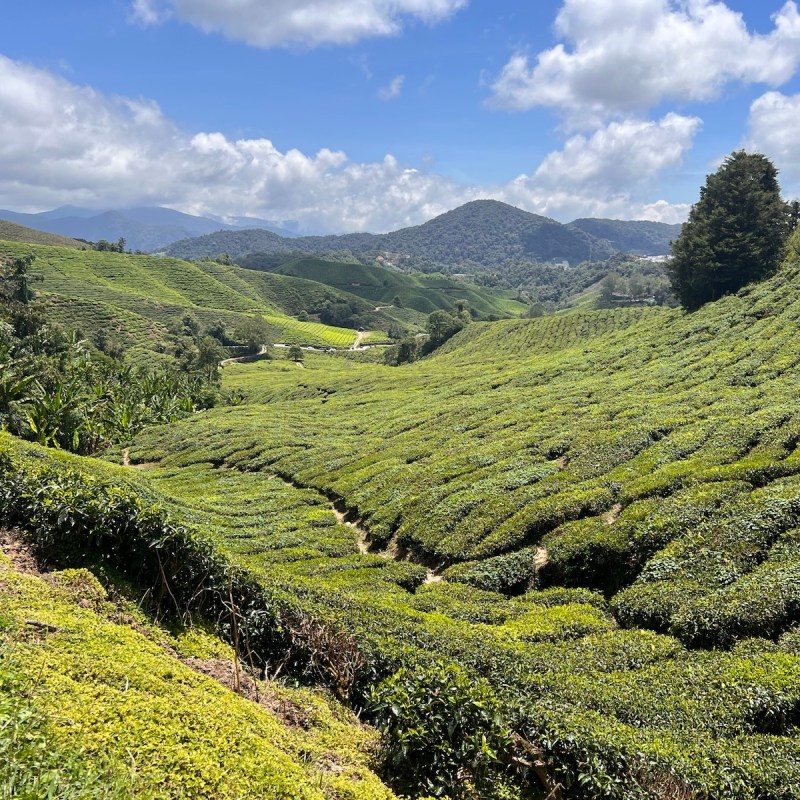
I spent 6 weeks in Asia in 2019 making my way around Vietnam, Thailand, and Cambodia. I ran out of time to continue onwards, so I didn’t get to Malaysia. I’ve wanted to go to Kuala Lumpur since a former work colleague told me about it in the ‘90s. It sat on the back burner of all my travels until this year.
Videos by TravelAwaits
As I began making my plans, I got back in touch with a Malaysian friend from college. She connected me with a friend in Kuala Lumpur, and between the two of them, I had a long list of recommended places to visit and places to eat. Food is one of the main highlights of this country with its cultural blend of Chinese, Indian, and Malay. From street food to restaurants, you’ll be delighted at every turn.
I find almost every country I visit requires an adjustment period, during which cultural norms and behaviors stand out to me every day. Malaysia was no exception. However, it did come with a few experiences I didn’t expect. Here are some of the surprising things to prepare for before your first visit to this fascinating country:

1. Malaysia Has Two Sides
The first thing you’ll learn when planning your travels here is that Malaysia is divided into two sides. It’s especially confusing because they aren’t attached! The left side of Malaysia borders Thailand and the right side of Malaysia borders part of Indonesia. Kuala Lumpur, which you may be more familiar with, is on the left side. The right side of Malaysia has more nature — for now. (Unfortunately, palm oil production and tourism are driving deforestation, which threatens the natural habitat of orangutan and other forest animals.)
If you’re looking for orangutans, you can see them more in the wild on the Borneo side but close to Ipoh, which is on the left side of Malaysia on Orangutan Island, where several rescued orangutans are in varied stages of being rehabilitated. The left side of Malaysia is the one I visited. It has less nature and more infrastructure, at least in the main tourist cities.

2. You Should Always Carry Some Cash
Unlike many places in the world, where cash can be met with surprise and condescension, oftentimes in Malaysia, people only take cash. For example, food markets, which you’ll eat at regularly, only take cash. When I bought my subway card in Kuala Lumpur, they wanted cash. Every day, you’ll find there’s something you want or need, and you can only get it with cash. So, make sure to carry some with you. There are many banks and ATMs. I tended to use known major banks to get cash, so I didn’t have to worry about ATM fraud. I never had a problem with it while I was there.
3. Crossing Streets Requires All Your Attention
Cars often drive right through pedestrian crossing lanes without slowing down. Crossing the street is an activity to give your full attention to. Put your phone down and look both ways, always. Sometimes, there aren’t any crossways and people just run. The best rule of thumb is to cross streets when there are no cars coming. If that isn’t possible, find someone else waiting to cross and use them as an indicator of when it’s safe to cross the street.

4. There Are A Lot Of Holes In Streets
Walking anywhere in Malaysia requires prudence about where you place your feet. On almost every block, you’ll find gaping holes. This was especially true in Kuala Lumpur and Penang. At first, I thought it was due to the economy. However, after witnessing my first monsoon-like rainstorm, I understood the holes’ purpose. I have never seen rain come down that hard and accumulate into multiple inches within minutes. Cars were carefully driving with tires partly submerged in a gathering river. Once the rain stopped, I was incredulous at how all the water drained away in under 5 minutes. If I hadn’t seen the storm, I would have thought I missed a small sprinkle. So, the purpose of the holes is clear, but you don’t want to fall into one!
5. Always Carry Tissues
Never leave home without a pack of tissues. While bathrooms are readily available, and happily offer both Western and Turkish-style toilets, toilet paper is much rarer. There are hoses in the bathroom stalls, which are normally used by locals, instead of paper. Unless you plan to use the hose, you’ll be glad to have a supply of tissues in your bag.
6. Try To Wear Short Pants Or Skirts
Since Malaysian toilets have hoses, instead of paper, you’ll quickly learn to expect wet bathroom floors. It’s not a nice feeling when you have to walk around with damp pant legs. The only good thing is that it’s so hot, they’ll dry quickly. I speak from unfortunate experience.

7. Don’t Show Too Much Skin
Malaysia has a large Muslim population. I bought a strapless dress while there, thinking it would help me be a little cooler in the high heat and humidity. I was delighted to sweat a little bit less while wearing it. However, while on an evening food tour in said dress, I noticed many people staring at me, to the point where I was uncomfortable. I didn’t feel in danger, just that I stood out. My tour guide explained that though it’s not illegal, or in any way wrong, wearing clothing showing cleavage will lead to stares. She helped me buy a wrap for $4 and I didn’t wear the dress again while in Malaysia.
8. It Takes Effort To Find Your Veggies
For reasons I don’t understand, I learned that Malaysians don’t eat many vegetables. So, when you order a meat dish, you won’t find any vegetables accompanying it. The only reliable way to get a good portion of vegetables with your meals is to order them on the side. With food prices so low, it won’t ruin your budget.
9. Sugar Is Very Popular
Diabetes is a huge concern in Malaysia. While there, you’ll find that sugar is in everything. The food is delicious, but if you don’t want it to be overly sweetened, make sure that you ask for “no sugar” in all your drinks. Desserts are popular and fresh lime juice (limau) is excellent — as long as you get it without sugar. If you go to the supermarket and try to get instant coffee, it’s almost impossible to find it without sugar.

10. Food Storage Isn’t What You’re Used To
If you stroll into any of the food markets, you’ll quickly notice something — there’s no ice. Likely, it would melt too quickly because there are no climate-controlled boxes to put the ice into. If you’re a Westerner, this will probably be an uncomfortable experience for you. Of course, all the food stalls get their meat and fish from these markets. I can only recommend accepting it as normal and enjoying the food. It’s excellent, and during a month in Malaysia, I never suffered any food poisoning or met anyone else who did. They just have different food preservation habits than we do.
11. Stray Dogs Don’t Get A Lot Of Love
This is certainly not the only country I’ve seen stray dogs. But, I’ve rarely seen strays that were so fearful of human contact. I encountered a lot of stray dogs in the Cameron Highlands and in Ipoh. I bought food for them and noticed they were terrified of me. I had to spend several minutes making kissing sounds and speaking softly to them before they were willing to stop. Then, I had to build up enough trust that they would stay still. I then poured out food and had to walk away to get them to come over to it and eat. I learned that Muslims aren’t allowed to touch dogs. This was a surprise to me and most other people I tell. If you love dogs, they’ll appreciate the food, but don’t expect to pet any of them.
By the end of my travels in Malaysia, I came to appreciate it a great deal. Food and taxis are cheap, and the people are lovely, curious, and engaging. Malaysia is home to the oldest rainforest in the world and there are still people who live purely in the forest. Tin mining put this country on the map and created today’s blend of cultures. One of the most fascinating food types I discovered was Hakka; not to be confused with the New Zealand Haka. I resonated with the story of the Chinese immigrants who were nomadic and traveled to Malaysia. Because they moved a lot, they had to use a lot of salt to preserve food as they went. Today’s dishes use less of it, and if you can find a Hakka restaurant while in Malaysia, you’re in for a treat.

